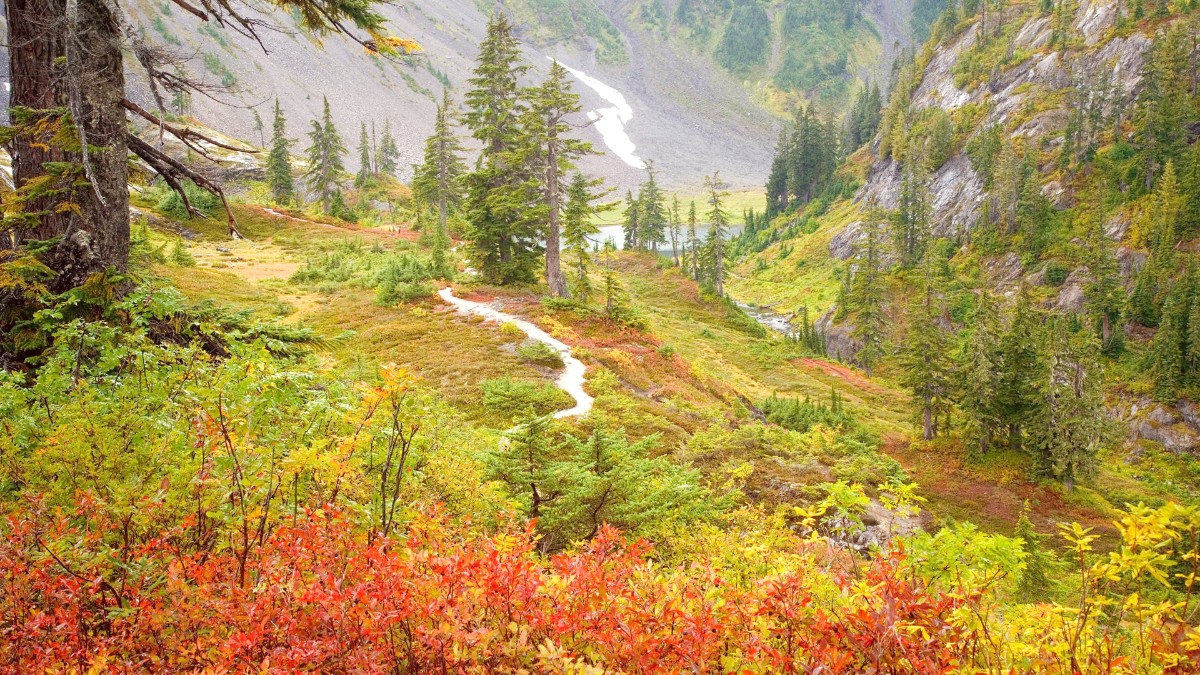
Russian Far East, Russia
The food focuses on natural, fresh ingredients, a necessity given the region's remoteness and historical isolation. The abundance of seafood, notably various salmon species, has shaped the diet and cultural practices for centuries.
Petropavlovsk-Kamchatsky, as the capital, features the widest range of dining options, from simple canteens to more formal restaurants, and a greater variety of international cuisines.
The core of Kamchatkan cuisine. A wide variety: salmon (King, sockeye, coho, pink, chum), crab (Kamchatka King Crab), cod, halibut, herring, squid, scallops. Red caviar ("ikra") is a local delicacy.
Wild game (bear, venison, fowl) forms part of traditional diets in remote areas. Forests yield wild berries (lingonberries, cloudberries, blueberries, cranberries, honeysuckle) and mushrooms, used in desserts, drinks, sauces, and soups.
Potatoes, cabbage, and root vegetables persist as staples. Dill, parsley, and garlic flavor many dishes.
The most famous local delicacy. This large, succulent crab meat often arrives simply boiled or steamed, with melted butter. Find it on menus at many seafood restaurants in Petropavlovsk-Kamchatsky.
Widely available in seafood restaurants.
A traditional clear Russian fish soup. In Kamchatka, it almost always uses fresh salmon, potatoes, and herbs like dill. Simple preparation allows the fresh fish flavor to shine. Available in many local cafes and restaurants.
A staple in local cafes and restaurants.
Salmon roe. Kamchatka is a major red caviar producer. It comes as a delicacy, often with blini (thin pancakes), on buttered bread, or as a garnish. Find fresh caviar in restaurants and for purchase at local markets. Sometimes it features in cultural experiences offered by ethno-cultural centers.
A local delicacy and major export.
Vodka, Kvass (fermented rye bread drink), Mors (berry fruit drink), Tea ("Chai"), Kompot (sweet fruit drink).
Fresh salmon (July-September), wild berries (late summer/early autumn) in jams, kompots, and desserts.
Fine dining in Kamchatka is limited. Some hotel restaurants in Petropavlovsk-Kamchatsky strive for a higher-end dining feel.
This type of restaurant is the most common in Petropavlovsk-Kamchatsky, with Russian, European, and sometimes Asian cuisine.
Remote areas feature limited choices, often integrated with tour packages. Petropavlovsk-Kamchatsky presents more options.
Vegetarian dining exists, but needs careful navigation. Common vegetarian choices include soups (ensure no meat broth), salads, potatoes, bread, and dairy products. Clearly state "bez myasa" (without meat). Vegan dining presents many challenges, specifically outside the capital. Choices remain extremely limited, mostly restricted to basic vegetables, bread, and some fruits. Animal products like dairy and eggs frequently appear in many dishes.
Bring a detailed allergy translation card in Russian. Self-catering makes managing specific dietary needs more reliable.
Halal and Kosher choices are extremely limited or absent. Kamchatka has a small Muslim and Jewish population, and no dedicated Halal or Kosher restaurants or certified products exist. Gluten-free and other allergen-aware dining presents many challenges. Awareness of allergies and dietary restrictions remains generally low in Russian restaurants. Dedicated options are hard to locate.
Communicate needs clearly and repeatedly with restaurant staff. Plan to choose simpler dishes naturally free of your allergens.
Not widely available for tourists. Some specialized tours may have basic cooking demonstrations as part of a multi-day experience.
No formal "food tours" in the Western sense. The best way to taste local food: explore markets and local eateries independently or with a knowledgeable local guide.
Many multi-day treks and helicopter tours feature meals prepared in the wilderness. This might include freshly caught fish cooked over an open fire or hearty camp meals.
Some rural guesthouses might share insights into local farming, but these are not structured as formal tourist activities.
Sukhari (dried bread rusks, eaten with tea), Pryanik (spiced gingerbread cookies, often decorated).
Found in bakeries and markets.
Local Berries (eaten fresh, or used in jams, kompots, and other desserts).
Seasonal and flavorful.
Kamchatka does not have a widespread "street food" culture. Small kiosks may sell pirozhki, hot dogs, or other simple snacks.
Outside Petropavlovsk-Kamchatsky, dining choices are few. Meals often come bundled with tour packages, especially for multi-day expeditions to wilderness camps or remote attractions.
Taste salmon prepared in various ways: grilled, smoked, cured, or in a traditional soup. Summer offers the freshest catches.
Seek out pirozhki in bakeries or local cafes, offering a quick and satisfying bite.
Enjoy desserts and drinks featuring fresh lingonberries, cloudberries, and blueberries during late summer and early autumn.
The capital city features the widest array of dining choices, from casual cafes to more formal restaurants. International cuisine options exist but remain limited.
Book ahead for popular spots during peak season.
Meals on multi-day tours often involve simple, hearty camp food, sometimes with freshly caught fish cooked outdoors.
A chance for authentic, rustic meals.
The Central Market in Petropavlovsk-Kamchatsky presents the best place to experience local daily life and find fresh fish, red caviar, produce, and baked goods.
Sample and purchase various types of local red caviar. Be aware of customs regulations for export.
The market atmosphere makes for good photography, capturing local interactions and colorful displays of goods.
Be prepared for a focus on fresh, local ingredients, notably seafood. Menus often feature traditional Russian dishes.